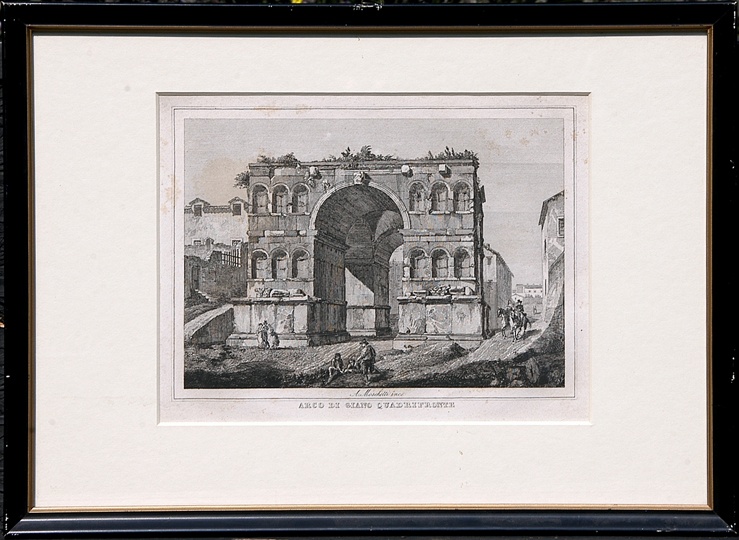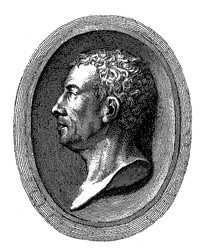Alessandro Moschetti veröffentlichte die Radierung des
Bogens des Janus Quadrifrons (hier Nachdruck). Moschetti war ein Kupferstecher der 1. Hälfte des 19. Jahrhunderts (gest. 1864) in der Tradition von Piranesi und Vasi. Nach Vorbild des letzeren gab er 1843 die Vedutensammlung "Nuova raccolta delle vedute di Roma antica e moderna" ("Neue Sammlung von antiken und modernen Ansichten Roms") heraus.
Der Quadrifrons, d.h. ein vierseitig geöffnetes Bauwerk auf quadratischem Grundriss, wurde früher als Tempel des doppelköpfigen römischen Gottes Janus gedeutet. Es handelt sich wohl aber schlicht um eine überdachte Straßenkreuzung am Forum Boarium aus dem 4. Jh.n.Chr., die den Kaufleuten Schutz vor Unwetter bot.br>
Bez.:
u. Mitte: A. Moschetti inc.
ARCO DI GIANO QUADRIFONTE
Geschenk Dr. Wolfgang von Wangenheim
en

